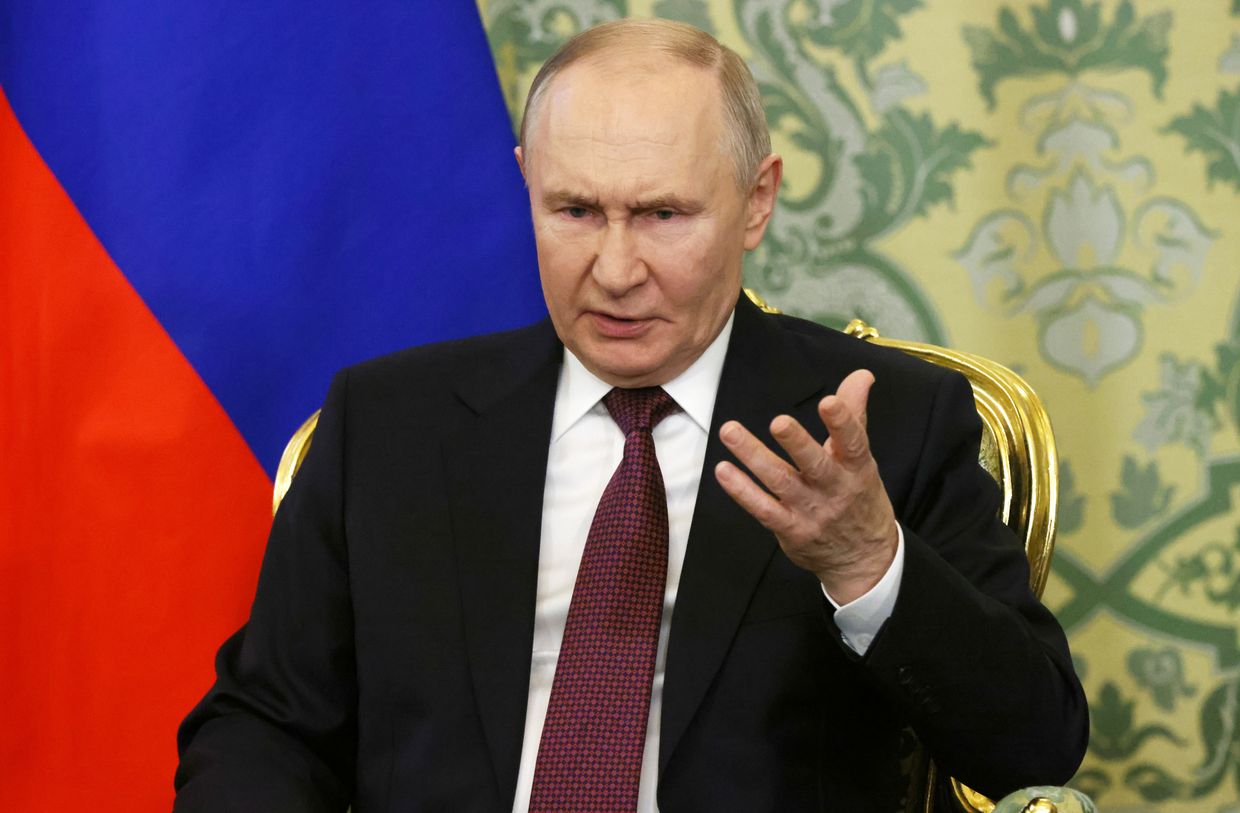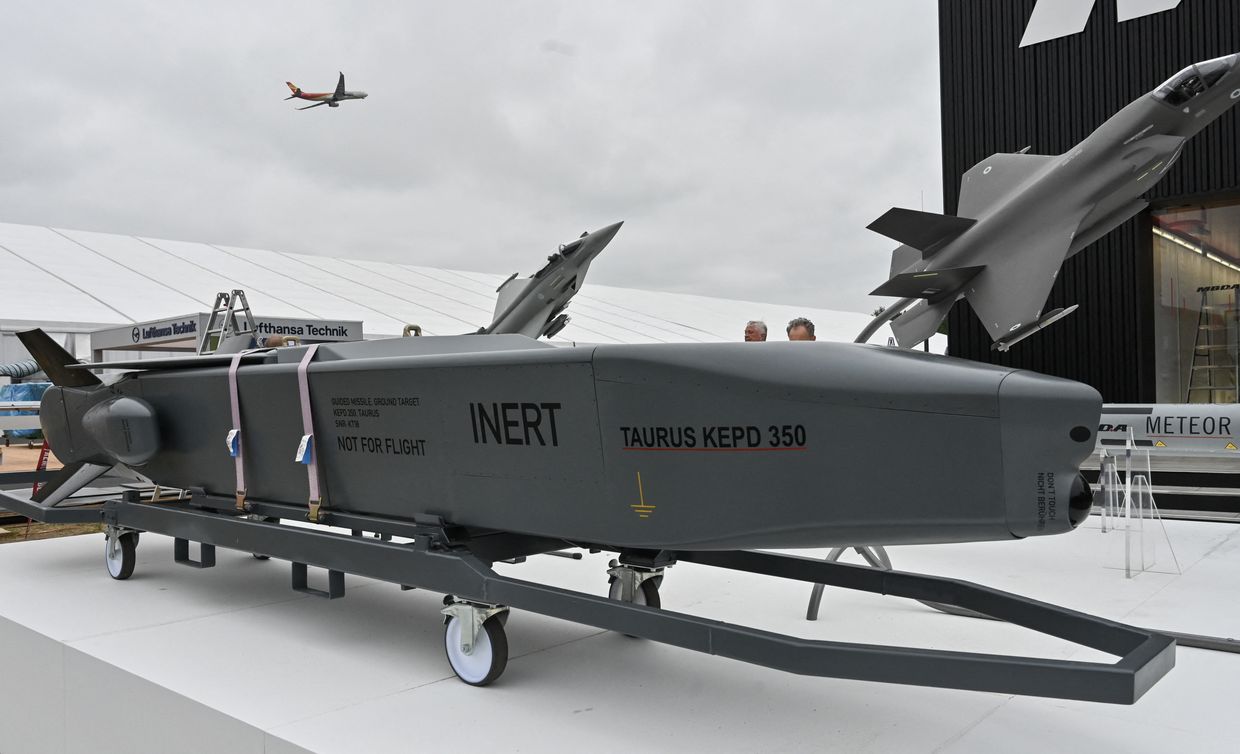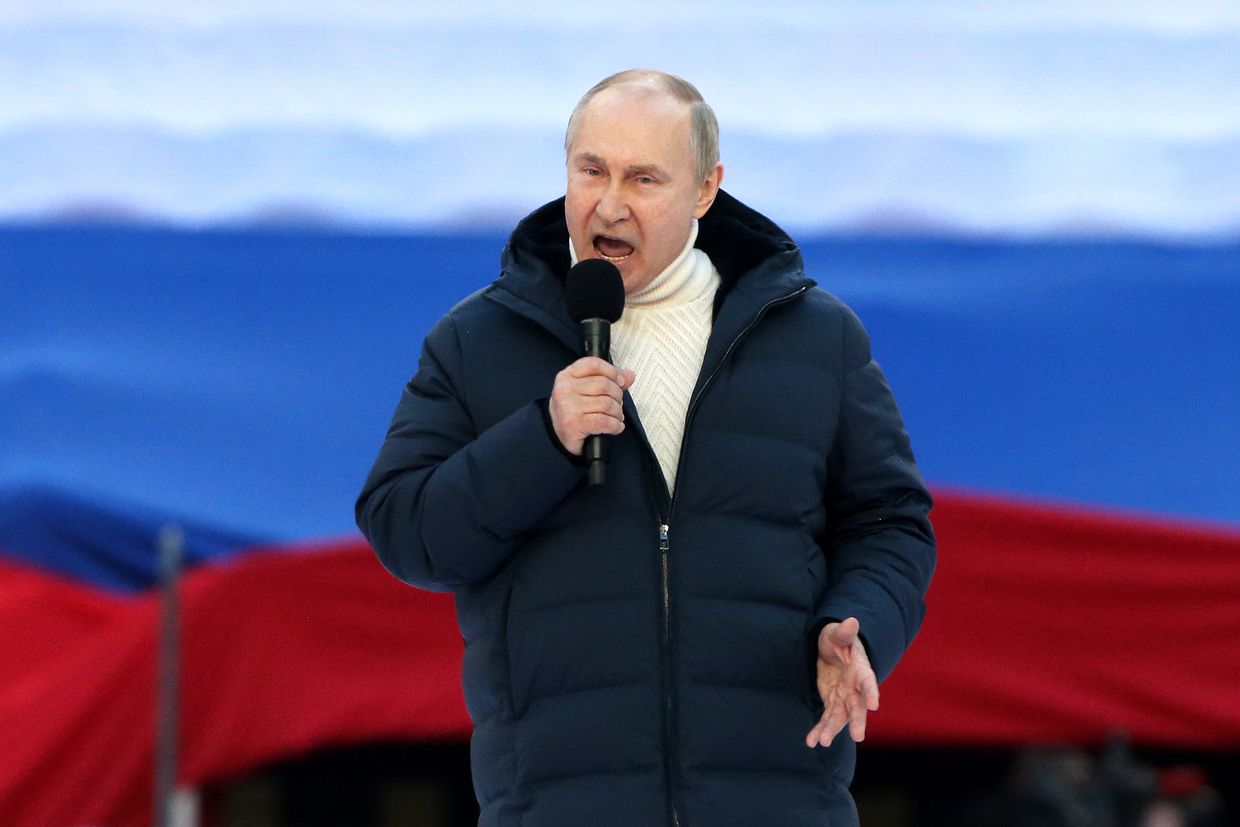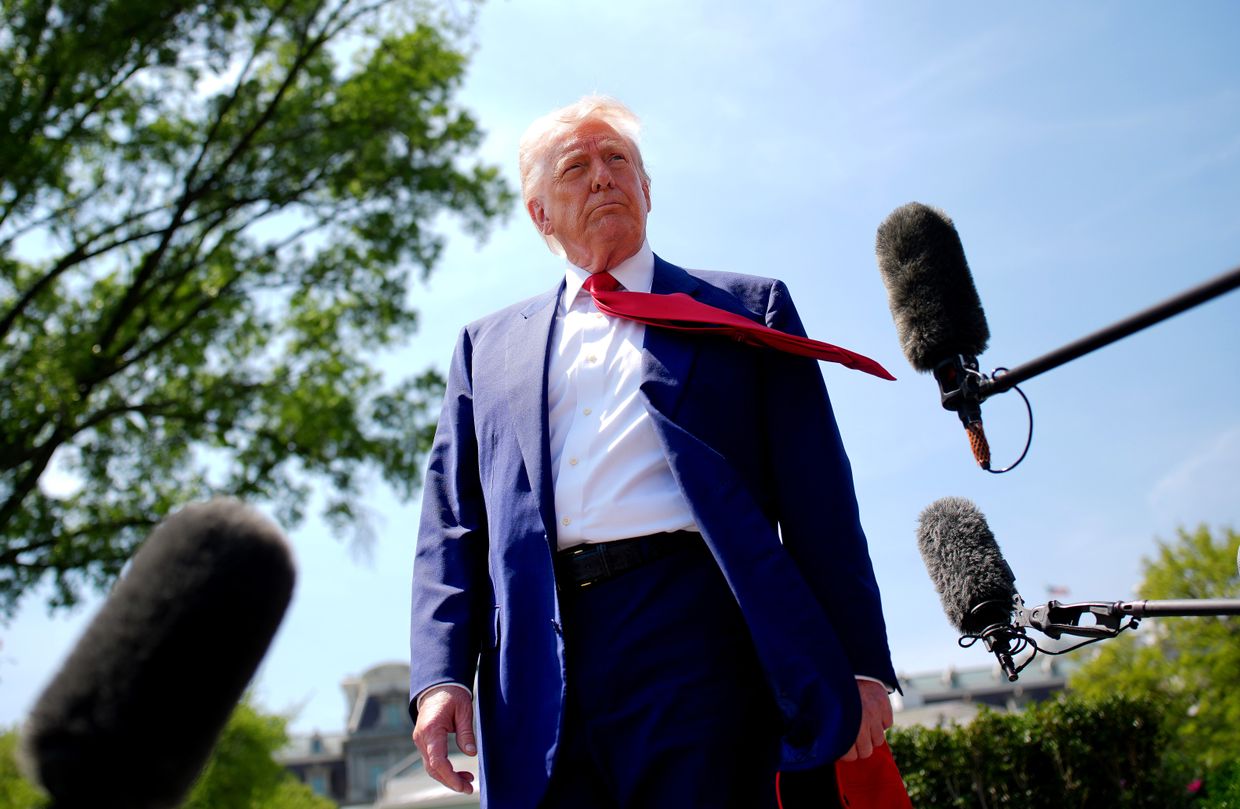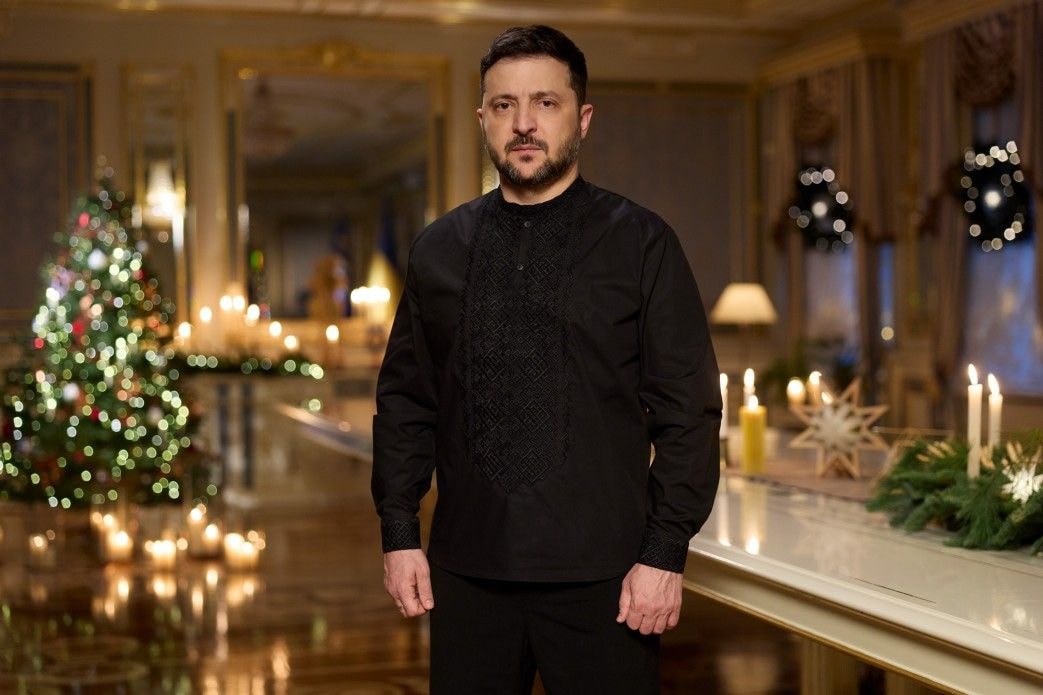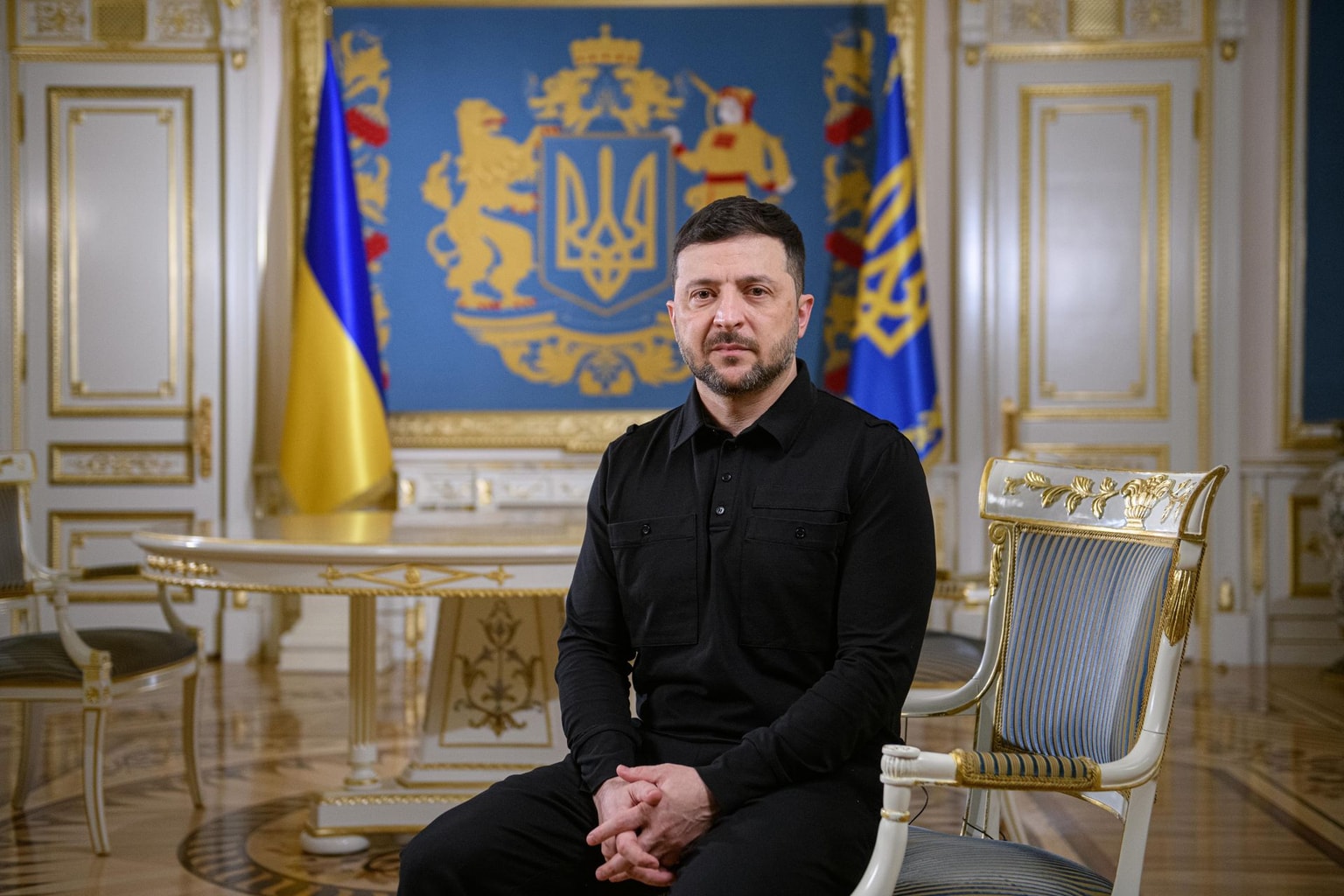Ukraine war latest: Trump admits to protecting Russia from 'really bad things'

Key developments on May 27:
- Trump admits to protecting Russia from 'really bad things' during Ukraine peace talks
- Russia builds power lines to connect occupied Zaporizhzhia nuclear plant to its grid, NYT reports
- US blocks G7 push to tighten Russian oil price cap, Financial Times reports
- Decision on lifting range restrictions on arms for Ukraine made months ago, Germany's Merz clarifies
- Russia changes drone tactics to bypass Ukraine's air defense, Air Force says
U.S. President Donald Trump claimed on May 27 that Russia would already be facing serious consequences if not for his actions, following one of the most intense Russian aerial assaults on Ukraine.
"What Vladimir Putin doesn't realize is that if it weren't for me, lots of really bad things would have already happened to Russia, and I mean really bad. He's playing with fire," he wrote on Truth Social.
Trump's comments mark a rare public rebuke of Russian President Vladimir Putin amid growing pressure on the U.S. administration to respond to escalating Russian attacks.
On May 26, Russia launched its third large-scale aerial and drone assault against Ukraine in three nights, killing at least six people and injuring 24 across multiple oblasts.
The attack marked the most extensive drone strike against Ukraine during the full-scale war, topping the previous record of 298 drones overnight on May 25.
Trump recently held a two-hour phone call with Putin during which Russia reiterated its refusal to a full ceasefire in its war against Ukraine. Despite this, Trump has refused to impose new sanctions on Moscow, citing ongoing efforts to reach a ceasefire.
"Because I think there's a chance of getting something done, and if you do that, you could also make it much worse," Trump said during a May 19 Oval Office briefing.
Trump has attempted to present himself as the only leader capable of ending the war quickly, though the lack of tangible pressure on Moscow has left Kyiv and its allies skeptical.
President Volodymyr Zelensky, responding to the May 25 overnight bombardment, called for urgent new sanctions and warned that "America's silence, and the silence of others around the world, only encourages Putin."
The European Union and U.S. lawmakers have also called for tougher action.
A bipartisan sanctions bill is already awaiting approval in Congress, with provisions for sweeping financial penalties and tariffs on nations buying Russian oil or uranium.
Russia builds power lines to connect occupied Zaporizhzhia nuclear plant to its grid, NYT reports
Russia is constructing power lines in occupied southern Ukraine in an apparent attempt to link the Zaporizhzhia Nuclear Power Plant (ZNPP) to its energy grid, the New York Times reported on May 27, citing a new Greenpeace report.
The Zaporizhzhia plant, the largest nuclear facility in Europe and one of the ten largest globally, has been under Russian occupation since March 2022.
Satellite imagery included in the report shows that since early February 2025, Russian forces have laid over 80 kilometers (49 miles) of high-voltage lines between occupied Mariupol and Berdyansk, following the coastline of the Sea of Azov.
Greenpeace experts believe the construction aims to connect the new lines to a large substation near Mariupol, which could, in turn, be linked to the ZNPP, which is located some 225 kilometers (some 139 miles) away.
It sits in the city of Enerhodar in Ukraine's Zaporizhzhia Oblast, on the east bank of the Dnipro River, which remains under Russian control. Ukrainian authorities have no access to the site or its surrounding infrastructure.
Shaun Burnie, a nuclear specialist at Greenpeace, said that the satellite evidence offers the first concrete confirmation of Russian President Vladimir Putin's plans to restart the plant and permanently integrate it into Russia's grid.
The construction of power infrastructure indicates long-term intentions to seize full control of Ukraine's energy assets in the occupied regions.
Russia has repeatedly asserted ownership over the plant based on its illegal annexation of Zaporizhzhia Oblast in September 2022, despite the fact that Ukraine retains control over much of the oblast, including its administrative center.
The International Atomic Energy Agency (IAEA) has repeatedly expressed concern over the safety of the plant, where shelling and the presence of armed troops have led to multiple emergency shutdowns and power disruptions.
The U.S. has reportedly proposed that control over the ZNPP be returned to Ukraine before transferring its management to the U.S. to supply electricity to areas under both Ukrainian and Russian control. Russia immediately rejected the suggestion.
US blocks G7 push to tighten Russian oil price cap, Financial Times reports
The United States opposed a joint G7 effort to lower the $60-per-barrel price cap on Russian oil exports during last week's meeting of finance ministers, the Financial Times reported on May 27, citing three unnamed officials familiar with the talks.
The price cap, introduced by the G7 and EU in December 2022, bans Western companies from shipping, insuring, or otherwise servicing Russian oil sold above $60 per barrel.
The mechanism was designed to limit the Kremlin's ability to finance its war against Ukraine.
The Canadian G7 presidency had proposed including language in the meeting's final communique that would call for tightening the existing price cap, according to the publication.
The move received backing from the European Union and G7 members France, Germany, Italy, and the U.K. However, the proposal was dropped after U.S. Treasury Secretary Scott Bessent reportedly declined to support it.
The European Commission had planned to propose reducing the threshold to $50 per barrel ahead of the meeting, according to Reuters.
The Financial Times reported that some EU countries — including Hungary and Greece — were still weighing their support for lowering the cap further, possibly to $45, as part of the EU's upcoming 18th sanctions package.
Russia's Finance Ministry has leaned on oil and gas taxes to finance growing military expenditures, including aggressive campaigns against Ukrainian cities and infrastructure.
Decision on lifting range restrictions on arms for Ukraine made months ago, Germany's Merz clarifies
German Chancellor Friedrich Merz clarified on May 27 that his comments on the West lifting range restrictions on arms for Ukraine referred to a step made months ago.
"The issue of limiting the range of deployed weapons played a role a few months and a few years ago. As far as I know, and as I said yesterday, the countries that imposed range limitations have long since abandoned these requirements," Merz said during a press conference with Finnish Prime Minister Petteri Orpo in Turku.
"In this respect, yesterday in Berlin, I described something that has been happening for months: namely, that Ukraine has the right to use the weapons it receives, even beyond its own borders, against military targets on Russian territory."
Speaking at a forum on May 26, Merz said that "there are no longer any restrictions on the range of weapons delivered to Ukraine" imposed by Germany, the U.S., the U.K., or France.
"This means that Ukraine can now defend itself, for example, by attacking military positions in Russia," the chancellor added. "Until recently, it couldn’t do that, and apart from very few exceptions, it hadn’t done so either."
Ukraine has previously received long-range missiles from the U.S., the U.K., and France — including ATACMS, Storm Shadow, and SCALP — but was initially permitted to deploy them only against Russian military forces in occupied Ukrainian territories.
Only in late 2024, the Biden administration and other allies eased the restrictions, allowing Ukraine to use long-range missiles against Russian military targets on Russian territory.
Merz's comments on May 26 caused some confusion as to whether he was referring to a newly announced policy, drawing both praise and rebuke. Ralf Stegner, a politician from Merz's coalition partner, the Social Democratic Party (SPD), told the media the move was "unhelpful" and called instead for intensifying diplomatic efforts.
In turn, a former German defense minister and ex-leader of Merz's CDU party, Annegret Kramp-Karrenbauer, praised Merz for his comments.
Merz's latest statement in Turku indicates that his earlier comment referred to the decision taken in late 2024 rather than a new policy. German Vice Chancellor Lars Klingbeil seemingly confirmed this, saying at a press conference that no new decision has been made "beyond what the previous government has done."
Before becoming chancellor, Merz signaled he would overturn the ban of his predecessor, Olaf Scholz, on the delivery of Germany's Taurus cruise missiles, capable of striking targets at a distance of 500 kilometers (300 miles). He has not confirmed whether he intends to deliver the missiles since taking office.
Russia changes drone tactics to bypass Ukraine's air defense, Air Force says
The Russian military has modified its tactics for launching attack drones against Ukraine in order to bypass air defenses, Ukraine's Air Force spokesperson Yurii Ihnat said in an interview with RBC Ukraine published on May 27.
Russia has been ramping up its drone production to launch ever-greater strikes against Ukrainian cities and infrastructure. The night of May 26 marked the most extensive drone attack of the full-scale war, reportedly involving 355 Shahed-type attack drones and decoys.
Russia's new tactic is to launch the drones at high altitudes, more than 2 kilometers (1.4 miles) above the ground, and keep changing the drones' routes. Then, the drones swoop down directly onto the target, Ihnat said.
"At this altitude, they become more visible to our radars, but remain out of reach of small arms, heavy machine guns, and mobile fire teams," the spokesperson explained.
Russian forces have also been conducting simultaneous group raids on the same residential area or facility, as well as using unmanned simulator drones called Parodiya ("a parody" in English), increasing pressure on Ukraine's air defense systems.
Recent Russian drone attacks comprised roughly 60% of attack drones and 40% of Parodiya decoys, according to Ihnat.
Russia has been deploying Iranian-made Shaheds and their domestically-produced copies, Gerans, to overwhelm Ukrainian air defenses in massive swarm attacks, allowing more destructive ballistic and cruise missiles to slip through.
The Economist previously reported that Russia uses Telegram messaging app bots to control its attack drones, ensuring real-time flight data and footage feed for human operators. The new control algorithm was revealed in a note hidden inside one of the Russian drones, possibly left behind by a "sympathetic Russian engineer," according to the media outlet.
Ukraine's sky shield is increasingly stretched thin as Western air defense supplies are running out. An undisclosed source told Le Monde that Ukraine has run out of ammunition for its two SAMP/T air defense batteries, while the Crotale short-range anti-aircraft systems have not received new missiles for a year and a half.
It remains unclear how many U.S.-designed Patriot interceptors, which are key in intercepting Russian ballistic missiles, are left in Ukraine's stockpiles, as the Trump administration is yet to approve any new military aid packages.
Note from the author:
Ukraine War Latest is put together by the Kyiv Independent news desk team, who keep you informed 24 hours a day, seven days a week. If you value our work and want to ensure we have the resources to continue, join the Kyiv Independent community.



